
|

|

|
This model scope is one of the favorites amongst backyard astronomers interested in astro-photography mainly because of its large apature, computer system, moderate price and strong alt-azimuth fork arms for holding other scopes and accessories. This type of scope enables imaging deep space objects such as nebula's as well as the planets, but it also provides a computerized object tracking platform for all of the other piggybacked scopes and accessories.
|

|
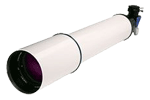
|

|
This type scope provides a good platform for observing the planets and can also act as a guide scope for long exposure images off the SCT. This scope is mounted directly on top of the SCT to work with its tracking platform and software. This is the last component that I require before I consider my setup somewhat complete.
|

|

|

|
Some of the nicest images I have seen come from high Megapixel digital SLR cameras. Two important features for a good camera should include hands free imaging so no vibrations affect the image and the ability to save images in RAW mode then later compiled through software.
|

|

|

|
These types of cameras are good at taking photos of deep space objects such as nebula's and have a higher resolutions than with color versions. You can still get color images by using RGB filters and taking multiple images, then using a workstation to compile them into a singe picture. The resulting image can be colorful and high quality.
|

|
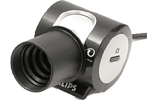
|

|
This line of web cams has been known to be a good low cost method of taking low light images of the planets. After purchasing a small adapter, disassembling the camera and making some minor modifications you can then have a decent, inexpensive camera for imaging or as a traking camera on the guide scope.
|

|

|

|
Various types of 2" and 1.25" eyepieces are used for specific purposes. Some are good for viewing planets, others for viewing nebula's and some are good for viewing large star clusters. Local weather conditions can also dictate the eyepiece that you might use for a particular nights viewing. The design of the lenses in the eyepieces can also affect the image as well as the field of view.
|

|
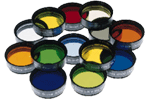
|

|
Various filters which are used for specific purposes. Some are good for viewing planets, others for viewing nebula's and some can help to filter local light pollution.
|

|

|

|
A pier or extremely sturdy mount is an absolute necessary for astro-photography. Another benefit of a permanent pier is that you can power down the scopes and when you bring them back online you do not have to go through the full alignment sequence, because they are in the exact position that they where when powered down.
|

|
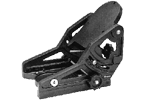
|

|
When taking photographs using an alt-azimuth mounted scope you really need to use an equatorial wedge between the scope and the pier. This wedge allows the scope to move along the same equatorial curvature of the earth. Instead of using alt-azimuth fork arms, more expensive German equatorial mounts do not require a wedge.
|

|

|

|
A computer can control the scopes tracking ability as well as a piggy-backed guide scope and the various cameras. Once you have an assortment of new images the workstation can then compile them into a higher quality picture.
|

|
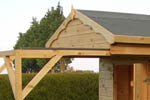
|

|
This is probably the single most important piece of a working astronomy setup. Having a permanent place for a pier, telescope and all the accessories allows you to simply 'park' the equipment when not in use. This can save allot of time setting up and breaking down allowing you more time for quick observations. Without the observatory someone might not take the time to haul all of their the equipment out and set it up for a nights observations.
|

|

|

|
If you can not connect the observatory to the grid then you can always use a solar panel(s), a deep cycle battery and an DC to AC inverter. This combined with on-grid electrical connected to the house can provide a good, clean, reliable power source.
|

|

|

|
True security is a combonation of a few systems such as motion flood lights, security cameras, a dog, a gun and running an alarm system with door and window (or roof) sensors.
|

|
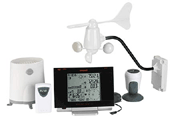
|

|
This could be more of an accessory than nessisary equipment. Its nice to be able to see the current tempature and weather at the observatory. Some systems can also become fairly complicated and can be connected to computers as well as upload information to web pages.
|

|

